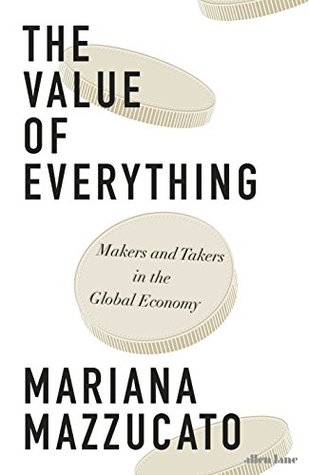More on this book
Community
Kindle Notes & Highlights
Read between
October 20, 2023 - May 8, 2024
The ‘marginal revolutionaries’, as they have been called, used marginal utility and scarcity to determine prices and the size of the market. In their view, the supply and demand of scarce resources regulates value expressed in money.
Marginal utility and scarcity need a couple of additional assumptions for price determination to work as intended. First, all humans have to be one-dimensional utility calculators who know what’s best for themselves, what price to pay for what commodity and how to make an economically ‘rational’ choice.11 Second, there must be no interference, for example by monopolies, in price-setting.
As we have seen, classical thinkers differed in their definition of who was and was not productive. For Quesnay only farmers were productive; Smith put services in the ‘unproductive’ bracket; and even Marx defined productive workers as those who were working in capitalist production. In marginal thinking, however, such classification was swept aside. What replaced it was the notion that it is only whatever fetches a price in the market (legally) that can be termed productive activity. Moreover, productivity will fluctuate with prices, because prices determine value, not vice versa. The utility
...more
But if there are problems with the way in which we measure GDP, policymakers can receive misleading signals about what is productive and how to steer the economy. Discussion about which parts of society are productive and which non-productive has been much less explicit since the arrival of marginal utility theory. As long as products and services fetch a price on the market, they are worthy of being included in GDP; whether they contribute to value or extract it is ignored. The result is that the distinction between profits and rents is confused and value extraction (rent) can masquerade as
...more
The most significant early initiatives took place in late-eighteenth-century France, when there were at least eight attempts by different thinkers to estimate France’s national product based on Quesnay’s land theory of value. Because, as we have seen, for Quesnay the production boundary encompassed only agricultural output – everyone else being classed as living off transfers from the agricultural sector – manufacturing was placed on the unproductive side of the boundary,
Similarly influential were Adam Smith’s ideas of value production. His national income estimates defined only the production or income of agricultural and industrial labour, which produced material goods – actual stuff – and excluded all services, whether government or banking ones.
In the late nineteenth century, marginal utility theory predominated.
Increasingly, under its influence, national accountants included everything bought with income: for them, the sum of revenue from market activity, irrespective of sector, added up to the national income.
Meanwhile, the labour theory of value which, fully developed by Marx, rooted productivity firmly in the concept of the production of ‘surplus value’, was either disputed or, increasingly, ignored altogether in assessments of national income. By the early twentieth century it was associated with a revolutionary programme and therefore could not, by definition, sit easily with official statistics in the very nations of which Marxists were so critical. Things were of course different in the countries where Communists came to power: first in the Soviet Union after the 1917 Bolshevik Revolution and
...more
Apart from this curious view of government, the national accounts expose a number of other accounting oddities. GDP, for instance, does not clearly distinguish a cost from an investment in future capacity, such as R&D; services valuable to the economy such as ‘care’ may be exchanged without any payment, making them invisible to GDP calculators; likewise, illegal black-market activities may constitute a large part of an economy. A resource that is destroyed by pollution may not be counted as a subtraction from GDP – but when pollution is cleaned up by marketed services, GDP increases. And then
...more
In essence, we behave as economic actors according to the vision of the world of those who devise the accounting conventions. The marginalist theory of value underlying contemporary national accounting systems leads to an indiscriminate attribution of productivity to anyone grabbing a large income, and downplays the productivity of the less fortunate. In so doing, it justifies excessive inequalities of income and wealth and turns value extraction into value creation. Put bluntly, any activity that can be exchanged for a price counts as adding to GDP. The accountants determine what falls into
...more
The first, covered in this chapter, is its expansion in absolute terms and as a share of total economic activity. Today, the sector has sprawled way beyond the limits of traditional finance, mainly banking, to cover an immense array of financial instruments and has created a new force in modern capitalism: asset management. The financial sector now accounts for a significant and growing share of the economy’s value added and profits. But only 15 per cent of the funds generated go to businesses in non-financial industries.3 The rest is traded between financial institutions, making money simply
...more
The aim of PFI financing is to share costs and remove from the government’s balance sheet the debt associated with large projects such as hospitals; however, it can be costly for the public sector because projects are financed with private debt and equity, which is significantly more expensive than public borrowing. Governments also pay private contractors an annual charge, running for decades and usually indexed to inflation, to cover the capital repayment plus interest and maintenance costs. So exclusive PFI contracts in effect create monopoly licences. The end result can be one where the
...more


